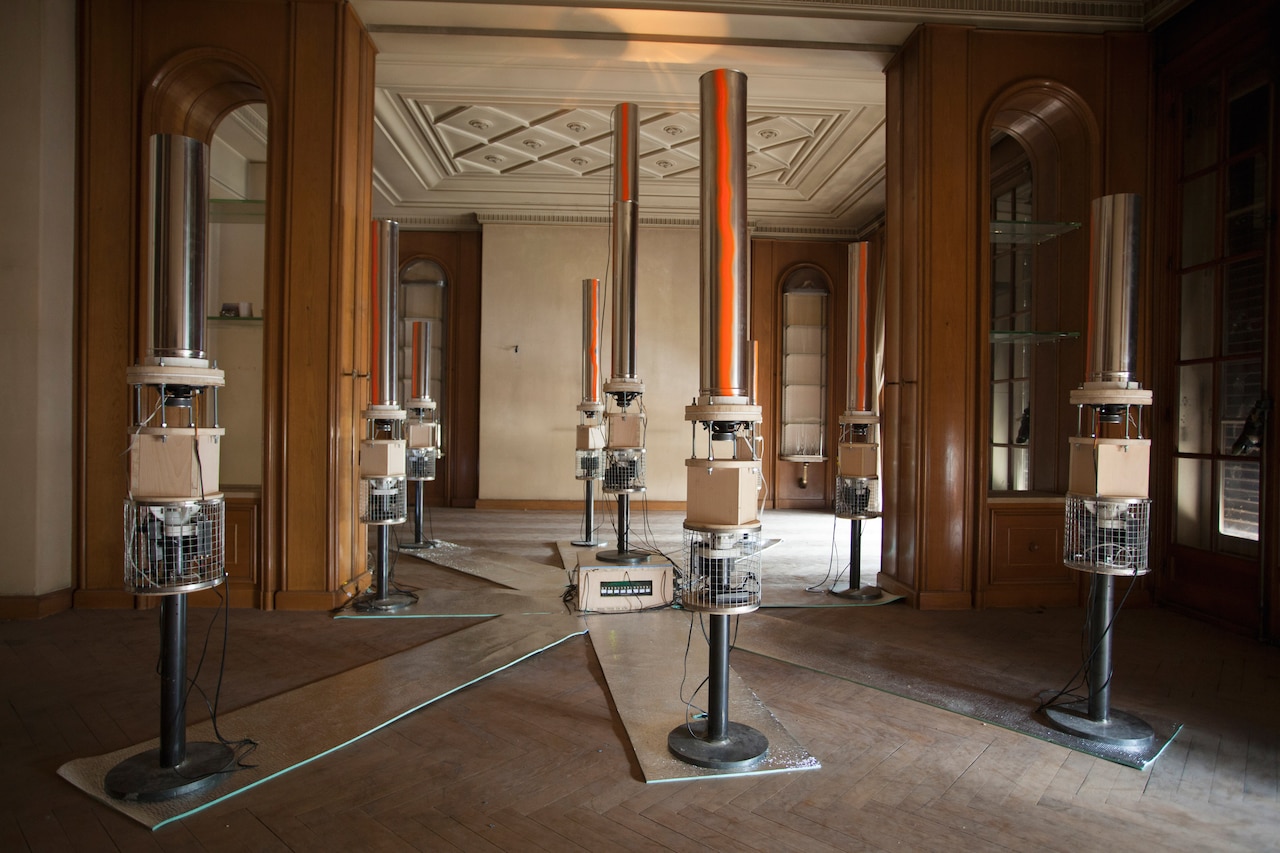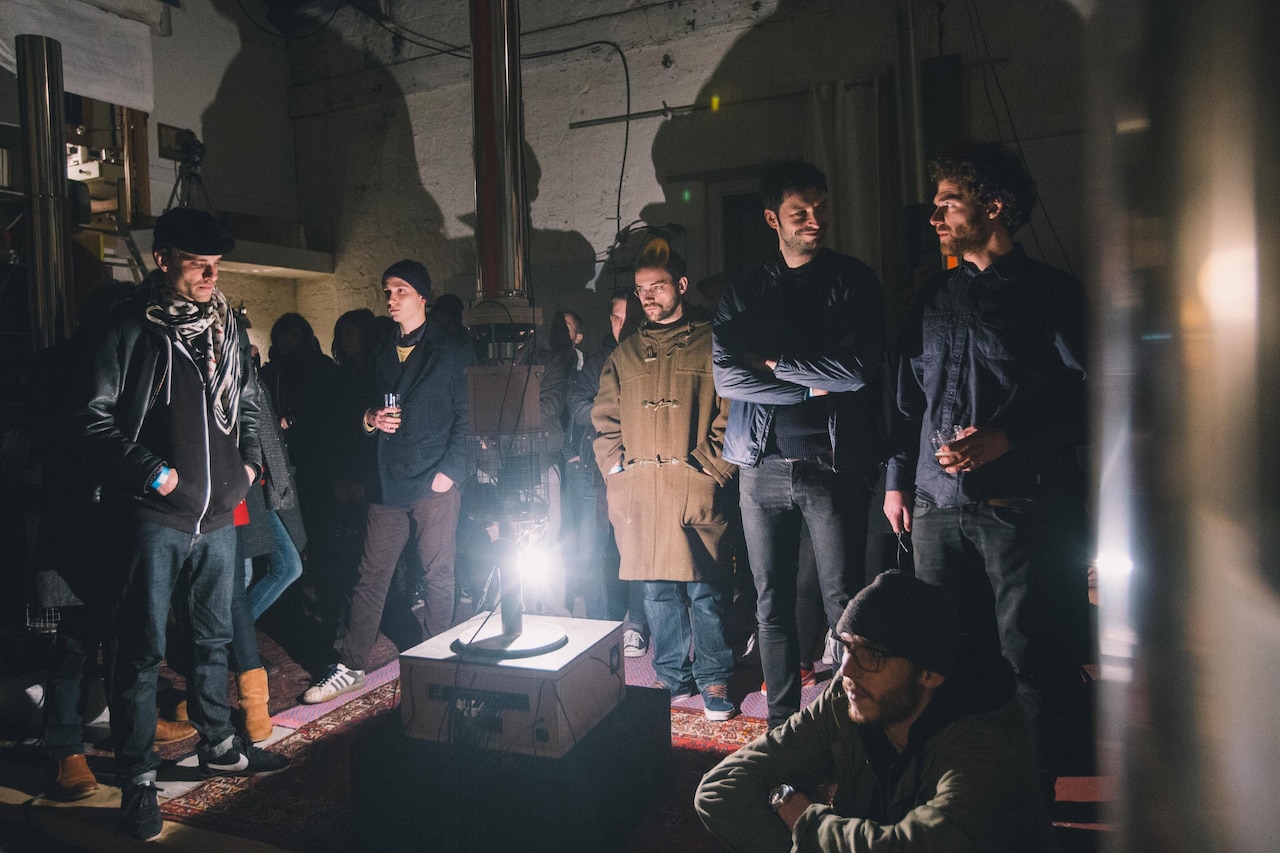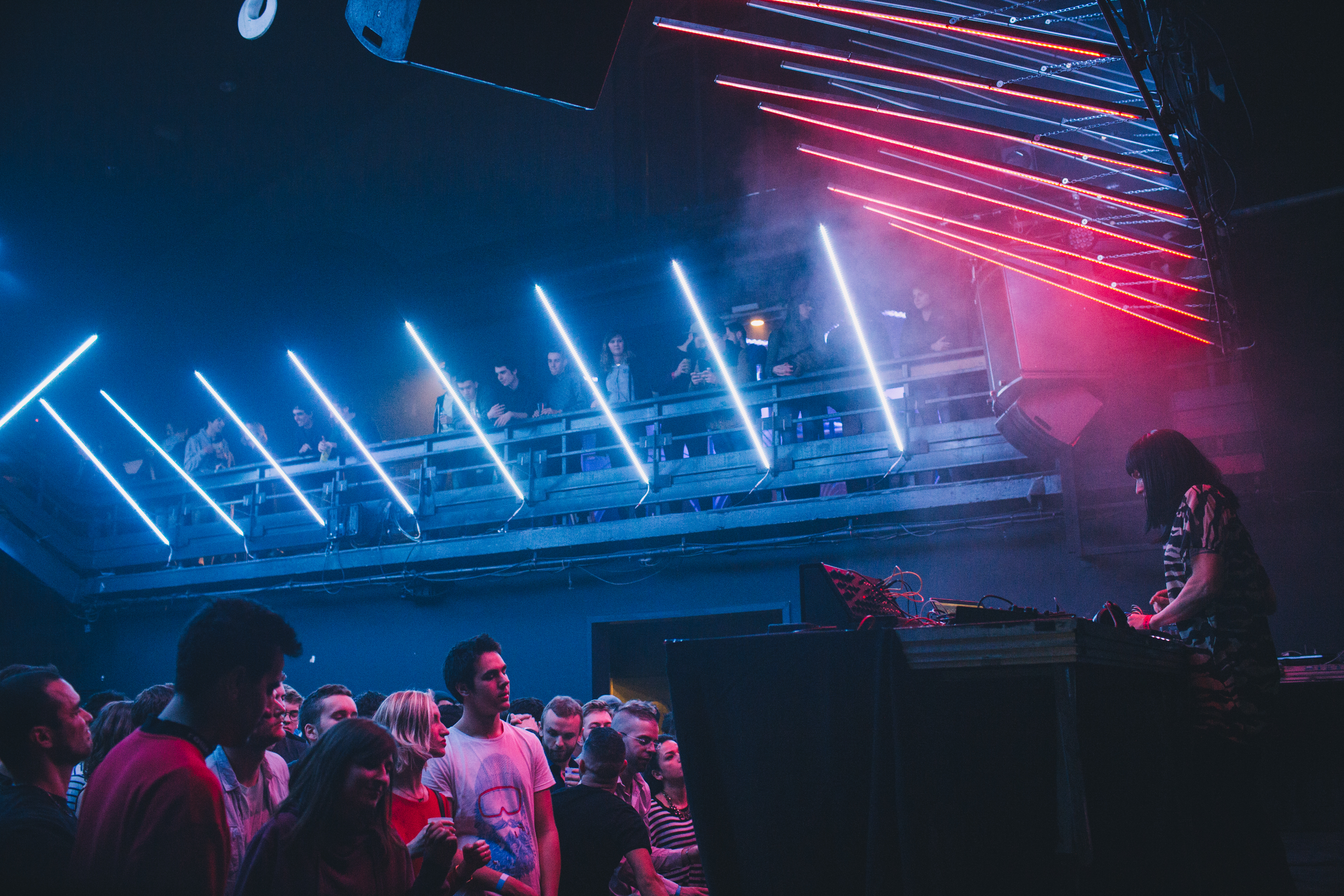Interview: Vahan Soghomonian on O.R.G.
The Lyon artist explains his collaborative interactive sound installation

After dabbling in abstract poetry by writing everyday words on paper handkerchiefs (“contreespace”/ counter space), tattooing mummified oranges (“oranges textuel”) and reproducing the moonscapes of Apollo 11 in an underpass (“ollopa”), Vahan Soghomonian hatched the idea for O.R.G. on the roof of an abandoned factory in Charleroi, France.
O.R.G. is a work made up of nine tube shaped speakers, each representing one of the planets in our solar system. The sound installation generates music inspired by the workings of the cosmos in interaction with the movements of the audience. The piece was presented as part of the recent string of RBMA events in Lyon, so we asked Vahan a few questions about its construction.
What did you get up to on the roof of that factory?
It was an expedition, albeit a low-tech one. There were four of us artists. The idea was to climb to the top of the highest blast furnace in Europe. We roamed around the factory for four days, and on the final night, we slept on the roof, beneath the stars. There were all these objects around us that looked like smokestacks, but actually, they were something else. I still don’t know what they were to be honest. Factories have a utilitarian architecture. A state of abandonment removes that purpose. When you don’t know what the function of these objects are, you can strip them bare, use them for something new.
How did that inspire you?
When I saw that landscape, and moved around inside it, I projected myself inside a planet of sound, a space open to exploration. I needed a beacon. The parallel between these tubes and a church organ came to me naturally, seeing the appearance of that musical instrument and the setting I was in. We coasted on the architectural metaphor taking us from an abandoned factory to a sacred edifice, all the way to its logical conclusion – the sizes of the tubes were fashioned to form a pyramid.

Your installation reproduces the solar system, why is that?
This proposal stems from the research we carried out on church organs. We discovered Pythagoras’s theory, the Harmony of the Spheres, which regards the proportions of celestial bodies in space as a form of music; music therefore acts as a pathway to access knowledge. So to produce sacred, celestial music, a church organ therefore refers back to the mechanism of the cosmos.
We followed this model but adapted it to current astronomical knowledge. Matthieu Reyaud and Fabien Ainardi composed the sounds for each of the planets. They then built a mechanical structure, and the sounds then rotated within this device. The movements produced over 200 million years are replicated in just 45.
What do the sounds of each planet represent?
They are initially derived from the musician’s perception of the myths surrounding each of them, as well as these planet’s own physical characteristics such as their size, their gaseous nature and telluric state.
How does the work function and what is its interactive aspect?
It is an organ and its keys are physical space. It is connected to 16 infrared sensors, each acting as a potentiometer modulating the composition. The number of individuals and the way they move about the venue are both translated into signals sent to the machine, signals which are then translated into sonic reactions.
Can the audience generate chaos with their interaction?
Visitors can play around with the level of intensity. However, the movement of sound within the device is constant. The way the sensors operate is more like an instrument for observation which allows us to draw in a specific sound.
Upon the invitation of the Red Bull Music Academy, several musicians have composed for this work. How did this collaboration take place?
We organized a workshop based around the installation with four musicians: IUEKE, Kapak, My Thud Unite Area and Tomi Yard. The fruit of this work will be a concert for O.R.G. organized within the workshop environment. And subsequently, the installation will play the result generated by this workshop in an independent fashion, for two days.
What are the parameters within which the musicians can interact?
In the case of the concert, there is in fact a huge amount of leeway. The musicians call upon the sculpture and its essence to deploy a whole universe. They bring their own sonic material. During the workshop they are going to have to get to grips with the device underpinning this work, to understand what the sensors are doing, and to adapt to the acoustics of the system.
